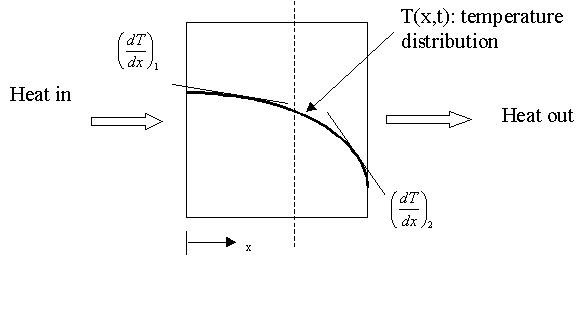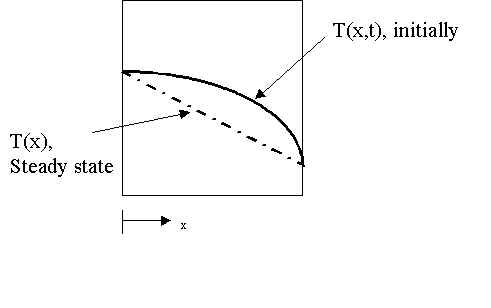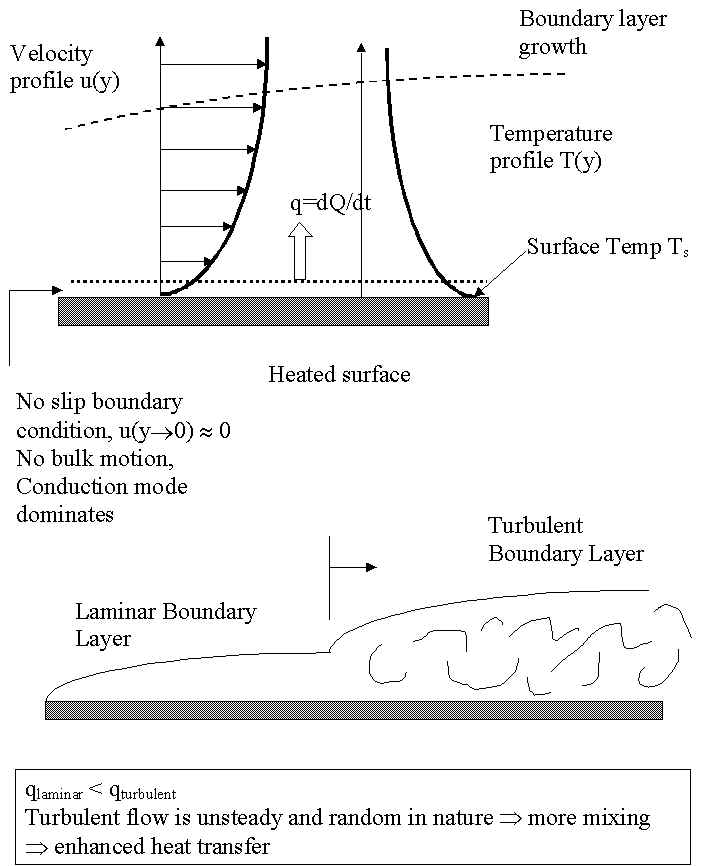
Heat Transfer:
Physical process by which thermal energy is exchanged between material bodies or inside the same body as a result of a temperature difference.
Conduction:
Energy transfer from the high-temperature region to the low-temperature region due to thermal diffusion process. It can take place in solids, liquids and gases. The Fourier's law states that the rate at which heat is conducted through a body per unit cross-sectional area is proportional negatively to the temperature gradient existing in the body.

where k is the thermal conductivity (W m/ șC), Q is the heat (in Joule), and dT/dx is the local temperature gradient.
Minus sign indicates that the energy flow in the direction of decreasing temperature.

Questions:

therefore, heat transfer at section 2 is higher than that at section 1.
Energy conservation: Energy accumulation = energy in -energy out
If the energy is flowing out faster than it is flowing in, the total energy inside the block will decrease. Therefore, the energy and, accordingly, the temperature will decrease.
Given time, it is expected that the temperature distribution inside the block will no longer change with time. Based on the previous argument, the energy in and out should exactly balanced. Therefore, the temperature profile should have a constant slope, that is, it has a linear distribution.

Convection:
This process of heat transfer from a solid surface to a moving liquid or gas is called convection. The motion of the fluid may be natural (driven by the heated or cooled solid) or forced (driven by external means such as a fan or a pump). The empirical equation governing the convective heat rate is often referred to as the Newton's law of cooling:

where the heat is transferred between a surface at uniform temperature Ts
and a fluid with reference temperature of T„ , As is the surface area, and ![]() is the mean coefficient of convection heat transfer; the unit for
is the mean coefficient of convection heat transfer; the unit for ![]() is W/(m2 °
C).
is W/(m2 °
C).


Convective process is accomplished in two stages: first, heat transfer from solid to fluid through diffusion process adjacent to the surface. Second, the bulk fluid motion will carry transferred heat away from surface. Therefore, the conductivity of the fluid plays an important role in heat convection. It is necessary to study fluid mechanics in order to understand fully the flow aspect of heat convection.
